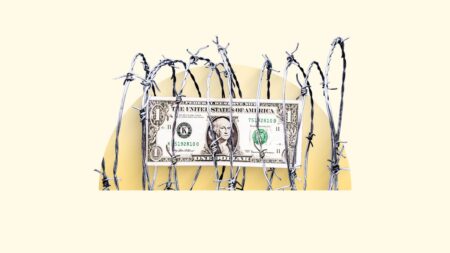Cavan Images/Getty Images
Driving without insurance in Indiana is never a good idea, and you may face significant penalties if you are found to be doing so. Bankrate’s insurance editorial team, which includes licensed insurance agents with decades of industry experience, took a deep dive into Indiana’s laws and regulations regarding driving without insurance. Indiana drivers may want to review our guide to find out what they need to know to avoid penalties or, worse, be found at fault in an accident without the protection of a robust insurance policy.
Minimum insurance required in Indiana
Indiana law requires that all car owners and drivers prove their continuous financial responsibility by maintaining certain levels of auto insurance. To legally drive, the following Indiana minimum car insurance coverage is required:
- $25,000 of bodily injury liability coverage per person
- $50,000 of bodily injury liability coverage per accident
- $25,000 of property damage liability coverage
- $25,000 of uninsured and underinsured motorist bodily injury liability coverage per person
- $50,000 of uninsured and underinsured motorist bodily injury liability coverage per accident
- $25,000 of uninsured motorist property damage
By law, uninsured and underinsured coverage must be offered by insurance providers, but you can choose to waive these requirements by signing a written agreement. However, most insurance experts recommend keeping uninsured motorist coverage along with maintaining higher levels of liability coverage to help avoid the potential pitfalls of being underinsured in the event of a costly accident.
Although minimum coverage is generally the cheapest option when you are purchasing car insurance, there are a number of insurers who offer affordable policies in Indiana. When shopping for the best policy for your needs, it can be a good idea to ask for quotes from a range of likely insurance companies to see who offers you an option that works for your wallet.
It’s recommended that you review your coverage selections with your agent to make sure they align with your financial needs. Here are some other coverage options that may be beneficial to keep or add to your car insurance policy:
- Uninsured motorist property damage (UMPD): This may provide payments towards repairing your vehicle if it is damaged by an uninsured driver who is at fault. This coverage may also provide money for property inside your car at the time of the loss. Depending on your insurer, UMPD pays out to the actual cash value of your vehicle and is only applicable if the at-fault driver is identified as not having insurance—coverage might not apply for hit-and-run accidents with unidentified drivers.
- Medical payments coverage: This may provide payments towards you and your passenger’s medical-related expenses regardless of who is at fault for the accident. In contrast, uninsured motorist coverage only applies if the uninsured driver is at fault.
- Collision coverage: This may pay to repair damage to your vehicle from a collision or hit-and-run. Collision pays up to the car’s actual cash value (ACV), may be subject to a deductible and may not require a determination of fault to apply.
- Comprehensive coverage: This doesn’t apply to typical collisions; however it may pay to repair your vehicle for damage outside your control, such as hail, fire, theft, vandalism, falling objects and windshield replacement. Comprehensive pays up to the car’s actual cash value (ACV) and may be subject to a deductible.
Penalties for driving without insurance in Indiana
There are a few situations where the Indiana Bureau of Motor Vehicles (BMV) can request an electronic filing of a Certificate of Compliance (COC), such as a misdemeanor or felony traffic violation or an accident. Typically, your insurer can submit this form on your behalf, showing that you are meeting Indiana’s financial responsibility requirements. If you did not have an active insurance policy on the requested date, there can be significant penalties, some of which we have outlined below.
SR-22 form
This form is a certificate of future compliance with Indiana’s minimum insurance requirements. The SR-22 must be filed with the BMV by your insurance company when your license has been suspended and must be in effect before an Indiana license can be reinstated. There are specific requirements for the length of time an SR-22 must remain in effect, depending on your circumstances.
First violation for driving without insurance
If caught driving without insurance for the first time in Indiana, you will likely have your driving privileges suspended for 90 days. As explained, this suspension creates the need for maintaining an SR-22, in this case, typically for three years.
Second and subsequent violations for driving without insurance
A second violation leads to more significant consequences. In addition to a one-year license suspension, a $500 fine will be imposed, and an SR-22 requirement is imposed for three years. With a third and any subsequent minimum insurance violations, a $1,000 reinstatement fee will be required, your license will be suspended for one year, and the SR-22 must be maintained for five years. These penalties are outlined by the state, but could be subject to the court’s discretion.
Getting into an accident without insurance
Receiving a ticket for no insurance in Indiana can come with other penalties, including a license suspension, SR-22 requirement and fines.
If you were at fault in a car accident without insurance in Indiana, you might be sued by the other driver, passengers and their insurance companies for personal injuries and property damage, which can lead to serious financial consequences. If applicable, you will also likely need to pay out of pocket for your own medical expenses and vehicle repair costs. Maintaining an active insurance policy, especially one with more than just the required limits, may help you better protect your financial future.
Frequently asked questions
Read the full article here
















